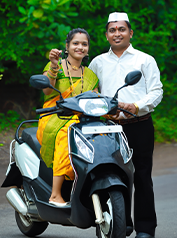Know about the Slum Rehabilitation Scheme, its main features, who can apply, and how it helps improve housing in Maharashtra.
The Slum Rehabilitation Scheme focuses on improving the lives of families living in slums by providing safe and permanent homes. It replaces slums with proper housing and ensures better use of land. By involving both the government and private developers, the scheme creates opportunities for redevelopment while addressing the needs of the residents.
Here are some of the key objectives of the scheme:
To provide permanent and safe housing for slum dwellers
To eliminate unsafe and unhygienic living conditions in slums
To promote the redevelopment of slum-occupied land for better urban planning
To make efficient use of land in densely populated urban areas
To improve the overall quality of life for underprivileged communities
Eligible slum dwellers are provided permanent homes with basic facilities, such as a bedroom, kitchen, bathroom, and toilet, at no cost
Builders are offered additional Floor Space Index (FSI) and other benefits to encourage participation in the scheme
The scheme relies on collaboration between the government and private developers to fund and execute redevelopment
Only slum dwellers who meet specific requirements, such as proof of residence before a certain date, are included
Includes the construction of residential complexes with basic amenities such as water supply, sanitation, and electricity
Vacant land from redeveloped slums is used for urban development projects
Guidelines ensure fairness and accountability in rehabilitation and redevelopment efforts
The Slum Rehabilitation Scheme (SRS) in Maharashtra has defined eligibility requirements for slum dwellers and developers to ensure fair and efficient implementation. Below are the criteria:
Protected Occupiers
Only residents who are actual occupants of the huts qualify for rehabilitation. Structure owners not residing in the slums are excluded under the Maharashtra Slum Areas (Improvement, Clearance, and Redevelopment) Act, 1971.
Date of Establishment:
Residents of hutments that existed before 1st January 1995 are eligible
Applicants must provide proof of continuous residence since before this date, with their names listed on the electoral rolls as of 1995
Hut Existence
The hut must physically exist, and the applicant must demonstrate they have been residing in the slum area.
Family Property Ownership
The applicant or their immediate family members must not own any property within the Brihanmumbai Municipal Corporation (BMC) limits.
Income Categories:
Applicants must belong to one of the following groups:
Economically Weaker Section (EWS)
Low-Income Group (LIG)
Middle-Income Group (MIG)
Consent Requirement
At least 75% of the slum inhabitants must agree to participate in the rehabilitation process for the project to proceed.
Developers participating in the SRS must adhere to the government’s guidelines and secure the necessary permissions for rehabilitation projects
They must comply with the conditions of public-private partnerships, including providing free housing to eligible slum dwellers and ensuring proper redevelopment of the area
These eligibility requirements aim to ensure that the scheme benefits deserving individuals while maintaining fairness and transparency in its implementation.
The Slum Rehabilitation Scheme (SRS) has brought significant changes to urban development in Maharashtra. Its impact can be analysed in terms of improved living conditions, social upliftment, and efficient land utilisation:
Redevelopment of Slum Areas
The scheme replaces overcrowded and unsafe slum settlements with planned housing, contributing to better urban planning.
Efficient Land Use
Vacated land from slum areas is repurposed for public infrastructure and urban development projects.
Improved Infrastructure
Rehabilitated areas feature better amenities like sanitation, electricity, and water supply, contributing to the city's overall development.
Permanent Housing
Eligible residents receive well-built, permanent homes with essential facilities at no cost.
Improved Living Conditions
Proper housing reduces health risks, improves hygiene, and ensures safety.
Social Upliftment
Access to better housing and infrastructure helps improve the social and economic status of slum residents.
Legal Housing Rights
Residents gain legal ownership of their homes, providing them with security and a sense of dignity.
Access to Basic Services
The scheme ensures access to clean water, sanitation, and electricity, improving the overall quality of life.
Despite its benefits, the SRS faces several challenges that can affect its success. Understanding these issues helps identify potential solutions:
Displacement Concerns
Temporary relocation during the redevelopment process often creates uncertainty and inconvenience for slum dwellers
Delays in Implementation
Lengthy approval processes, legal disputes, and bureaucratic hurdles lead to project delays, affecting timelines
Resistance from Slum Dwellers
Some residents are reluctant to participate due to fear of losing their homes, mistrust of developers, or concerns over eligibility
Developer Challenges
Private developers often face financial and operational risks, such as insufficient incentives or delays in obtaining approvals
Infrastructure Strain
Rapid redevelopment without adequate planning can strain existing urban infrastructure
Transparent Communication
Engaging with slum dwellers and addressing their concerns can build trust and encourage participation
Streamlined Processes
Simplifying approval procedures and resolving disputes quickly can reduce delays
Increased Incentives for Developers
Providing additional financial support and policy incentives can motivate developers to undertake projects
Effective Urban Planning
Ensuring adequate infrastructure upgrades alongside rehabilitation projects can prevent overcrowding and strain on resources
Community Involvement
Actively involving slum residents in decision-making can reduce resistance and ensure fair outcomes
The Slum Rehabilitation Scheme (SRS) in Maharashtra shares similarities with other housing initiatives like Pradhan Mantri Awas Yojana (PMAY-Urban) and state-specific slum clearance projects. Both SRS and PMAY aim to provide affordable and permanent housing to underprivileged communities. However, SRS also has distinct differences in its approach and implementation.
Here is a quick comparison:
Feature |
SRS |
PMAY (Urban) |
State-Specific Slum Clearance Projects |
|---|---|---|---|
Scope |
Limited to Maharashtra, focusing on slums |
Nationwide, covering rural and urban areas |
State-specific initiatives addressing local housing issues |
Target Beneficiaries |
Slum dwellers only |
Broader audience, including EWS, LIG, MIG, and slum dwellers |
Primarily slum dwellers within the state |
Housing Provision |
Free on-site housing for eligible slum dwellers |
Subsidised housing loans or financial assistance |
Relocation or redevelopment of slums with varying models |
Eligibility Cut-Off |
Huts existing before 1st January 1995 |
No specific cut-off for slum dwellers |
Criteria vary based on state policies |
Implementation Model |
Mandatory consent from 75% of slum dwellers |
No such consent requirement |
Depends on state guidelines and regulations |
Ownership Restrictions |
Tenements cannot be sold for 10 years |
No such restriction on ownership |
Varies depending on state-specific rules |
Developer Incentives |
Offers additional FSI and benefits |
Limited incentives for developers |
State policies may or may not include incentives |
Developers are incentivised with benefits such as additional Floor Space Index (FSI), allowing them to build more on the same land, making the projects financially viable. They may also receive exemptions or concessions in government fees and charges.
The Maharashtra Housing and Area Development Authority (MHADA) oversees the implementation of the SRS. It works in coordination with private developers, local municipal bodies, and slum residents to ensure smooth execution.
If a slum dweller refuses to relocate, it can delay the project. However, the scheme requires consent from at least 75% of the slum inhabitants to proceed, making it a majority-driven initiative. Efforts are often made to address concerns and ensure cooperation.
No, the Slum Rehabilitation Scheme (SRS) is specific to Maharashtra and primarily focuses on slum redevelopment in urban areas like Mumbai. Other states have their own slum clearance or housing schemes tailored to local needs.
To minimise displacement, the scheme focuses on on-site rehabilitation, ensuring that eligible slum dwellers are relocated to permanent housing within the same area. Temporary arrangements may be provided during construction, and efforts are made to ensure a smooth transition.












